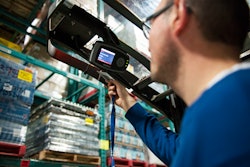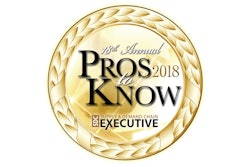
As the on-demand economy continues to grow, responding to consumer appetite for immediate, convenient access to goods and services becomes imperative to provide competitive, value-based solutions. According to Rockbridge Associates, the on-demand economy grew by 58 percent in 2017. While new companies spring up to thrive in this environment, existing businesses must learn to adapt. For companies that provide tangible goods, supply chain management has always been both a differentiator and a measure of competitiveness. To respond with agility in the on-demand economy requires building smarter supply chains and connecting them to the Internet of Things (IoT).
In the past, the goal of supply chain logistics was based around delivering the most effective (and cost-optimized) method. A different approach is now warranted to meet today’s intense competitive pressure, handle consumer demand and provide high quality customer service. Shifting supply chain management from efficiency to responsiveness will be required to meet next-day and same-day delivery expectations, to deliver produce, food and medicine with absolutely no spoilage, or to secure shipments from point of origin to point of sale. The old ways of managing shipping logistics are no longer sufficient. Smaller production runs and shipments require just-in-time fulfillment and on-demand delivery, made possible by real-time visibility throughout the supply chain.
Real-time, granular, immediate data must be transparently available, fueling collaboration among all partners in the supply chain and integrating with existing information systems via electronic data interchange (EDI) and other means. But where does the information come from?
Telematics technologies that have been available for years to track fleets of vehicles have evolved into smart cellular gateways with plenty of onboard computing power. These units, which can include GPS, accelerometers and connections to the engine computer and other sensors, provide up-to-the minute data about the vehicle’s location and speed while giving the driver route guidance to help get the shipment delivered on time. When weather, traffic and other factors interfere, the devices can dynamically re-route and even provide a way for dispatch and the driver to communicate.
Sensor tracking devices can be attached directly to a trailer or shipping container, giving visibility into its location in real-time across shipment modes even when it is in the hands of a third-party logistics partner. These sensors measure and report in real-time or log temperature, humidity, shock and other environmental factors that can affect the integrity of the products being shipped.
Even smaller sensor tags can be used to track pallets or individual packages. These tags communicate with a gateway within the cargo container or on a truck and are able to provide the location of the package within the trailer or container, as well as localized environmental factors.
Used in conjunction with a cloud service, these different types of devices deliver real-time information about shipments and their contents to a web application that lets operators manage the supply chain 24/7 from anywhere, while providing scalability to support any shipment method.
The benefits of building a smarter, IoT-connected supply chain go beyond merely providing visibility to shippers and partners. Real-time and logged data helps ensure that food, produce, pharmaceuticals and other sensitive cargo has not been exposed to conditions that will cause damage or spoilage. If there is a problem, knowing the status in real time can facilitate decisions to take corrective action. For example, cargo can be redirected to a nearer destination or loaded onto a different container. Importantly, this visibility is maintained even in third-party logistics or “last-mile” segments. This type of responsiveness ultimately preserves higher yields in shipped cargo while providing a better shopping experience for consumers of both retail and on-demand products.
The IoT is bringing both challenges and solutions into play at the same time. While consumers demand more choice, faster delivery and real-time tracking, the technology that enables companies to meet these challenges is also giving rise to a smart, collaborative ecosystem of partners who can share information with each other in real time. It’s important not only to be responsive but to be informed with the right intelligence to respond immediately to new information. The key to building this smart supply chain ecosystem is the tracking and monitoring of packages with smart sensors that can talk to cloud applications via intelligent gateways on trucks and containers, truly bringing each shipment into the Internet of Things.




















